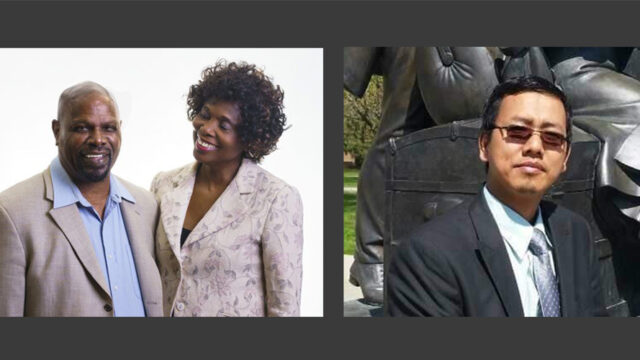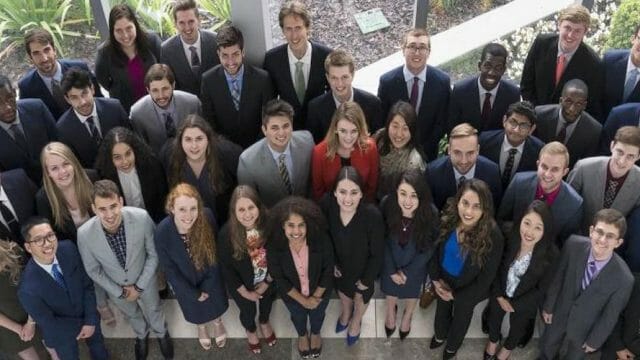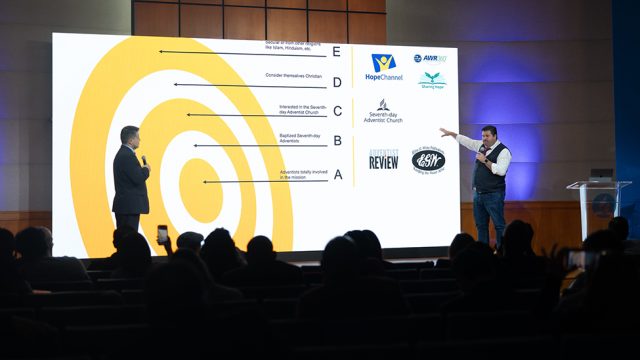Board chair Merlin Burt calls it ‘a practical way of connecting to God’s leading.’

Adventist Heritage Ministries (AHM) “is a practical way of actually connecting to God’s leading and His working in the past, to show how He can work for us today and in the future,” AHM board chair Merlin Burt said on the first day of business sessions of the General Conference Executive Committee’s Annual Council at the Seventh-day Adventist Church headquarters on October 11.
Burt introduced AHM president Markus Kutschbach, and Kutschbach shared information about Adventist historic sites in the US and around the world. He reported on several initiatives that seek to highlight the pioneers’ legacy and transmit knowledge about the early history of the denomination to newer generations.
Heritage Evangelism
Kutschbach described what is known as, in the ministry he leads, “heritage evangelism,” which, he said, is a unique way to approach people. It involves welcoming people to Adventist historic sites, telling them stories about pioneers, including their moments of success and struggles, and within that context discussing the denomination’s beliefs.
In those circumstances, people “don’t care if you talk about the seventh-day Sabbath, … the heavenly sanctuary, the Second Coming, or the great disappointment,” Kutschbach said. “They are listening, they are thinking about it, and then they start to ask questions.” He added, “Historic properties are neutral ground.”
An Immersion Experience
But something else is involved, he said. Nowadays, Kutschbach explained, museums strive to subject visitors to an immersion experience, where they can touch, hear, feel, and even smell. “In that way, you [can be] subject to an experience that is not just two-dimensional,” he explained. “It takes you into a story.”
It’s a method that can help children and others connect to real, multidimensional experiences, he said. And the same applies to objects and other historical artifacts. “Stones can help you tell stories, especially to children,” Kutschbach said, referencing the 12 stones of the Joshua 4 monument in the Bible. The lesson to the Israelites was, “Don’t forget the mighty acts of God,” he emphasized. “So, the monument [Joshua] set up was a reminder for future generations to keep the story of the mighty acts of God alive.”
The same should apply to us, Kutschbach said. “Don’t forget the mighty acts of God in your life.”
Fighting Forgetfulness
As we humans tend to forget, historic sites and artifacts are important for remembering our early history and transmitting that knowledge to future generations, Kutschbach said. He quoted Adventist Church co-founder Ellen White, who in 1890 wrote, “The past history of the cause of God needs to be brought before our people, young and old, that they may be familiar with it” (Letters and Manuscripts, Volume 6 [1889-1890], Letter 33, par. 7).
In another instance, White called “ministers and people” to study the history of “the people and the cause of God,” not “forget the past dealing of God with His people,” “revive and recount the truths” given, and then give them to the world (Selected Messages, vol. 1, pp. 157, 158). White “is linking a successful, powerful mission, with a solid knowledge of our history,” Kutschbach said. She asked to “set up our monumental pillars … with the precious story of what God has done for us” (Letters and Manuscripts, Volume 6 [1889-1890], Manuscript 22 [1889], par. 23).
Unrealized Potential
In the next section, Kutschbach described some of the Adventist pillars of the denomination’s early history. They include a monument for the Second Coming at the William Miller farm; a monument for the heavenly sanctuary at Hiram Edson’s farm, a stone of remembrance for the seventh-day Sabbath and the three angels’ messages at Joseph Bates’ boyhood home; and a memento of the Spirit of Prophecy in one of James and Ellen White’s homes in Battle Creek, Michigan. Also, the village of Battle Creek tells the story of the Adventist movement, Kutschbach emphasized.
Kutschbach shared how an increasing number of people, many of them not church members, are visiting those places because they are interested in the stories behind them.
He explained that some of those places have a lot of potential, like the possibility of placing an early Adventist campground in Miller’s farm, where young and old can come to learn about the beginnings of the Adventist movement. “And what about if we build a visitor’s center, a welcome center, which may tell the story in an immersive way?” he asked excitedly. “These are preliminary ideas of what we could do,” Kutschbach said, explaining that possibilities for each one of the Adventist historic places are endless.
Life-transforming Knowledge
Kutschbach ended on a personal note, acknowledging that he wouldn’t be there speaking to the audience but for the history of the Adventist Church. “It is so powerful that it changed my life,” he said, revealing that he grew up in Communist East Germany and distanced himself from the Adventist Church after the Berlin Wall fell and he experienced “freedom.” But he came across a German copy of The Great Controversy, and eventually went back to church. Kutschbach kept reading books with stories about Adventist history. “Our history matters,” he said. “Tell your kids stories about our beginnings. [They] will stick with them.”
He closed with a piece of advice. “Make sure that the stories of our pioneers … are available to our children. It will change your church. If you are familiar with these stories, you will see the next generation finishing this work.”












